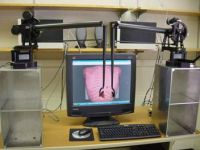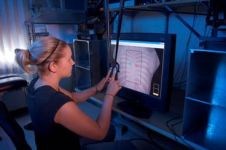Future Uses in Medical Training
The future of haptics in medical training will grow in two directions. First, there will be an increasing number of fields that uses virtual reality simulators in training medical students. Second, these simulators will began to offer more and more realistic haptic feedback to the user to further increase the realism of the simulator.The focus of most virtual reality training simulators is either endoscopic and laparoscopic surgeries. The nature of these surgeries makes it much easier to make a simulator that very closely resembles the actual surgical procedures. This is partly due to the instruments that are used for these surgeries. Cardiac surgery, in contrast, requires the use of both hands, multiple tools and multiple surgeons. This is a much more complex problem with many more variables and will require completely new systems.
One example of the future of haptic feedback in medical training is the Virtual Haptic Back (VHB) simulator that is being developed by Ohio State University. This system consists of two haptic interfaces (PHANToM 3.0) that each attach to the index fingers of the student. A human back is simulated and the medical students are trained in palpatory diagnosis. Haptics are key in this simulator because the whole point of this training is to teach students what to feel for when giving a real back exam. This type of training will greatly increase the experience of medical students as they will see many different cases and situations in a short period of time.
 VHB trainer uses two haptic interfaces |
 Medical student using the VHB |